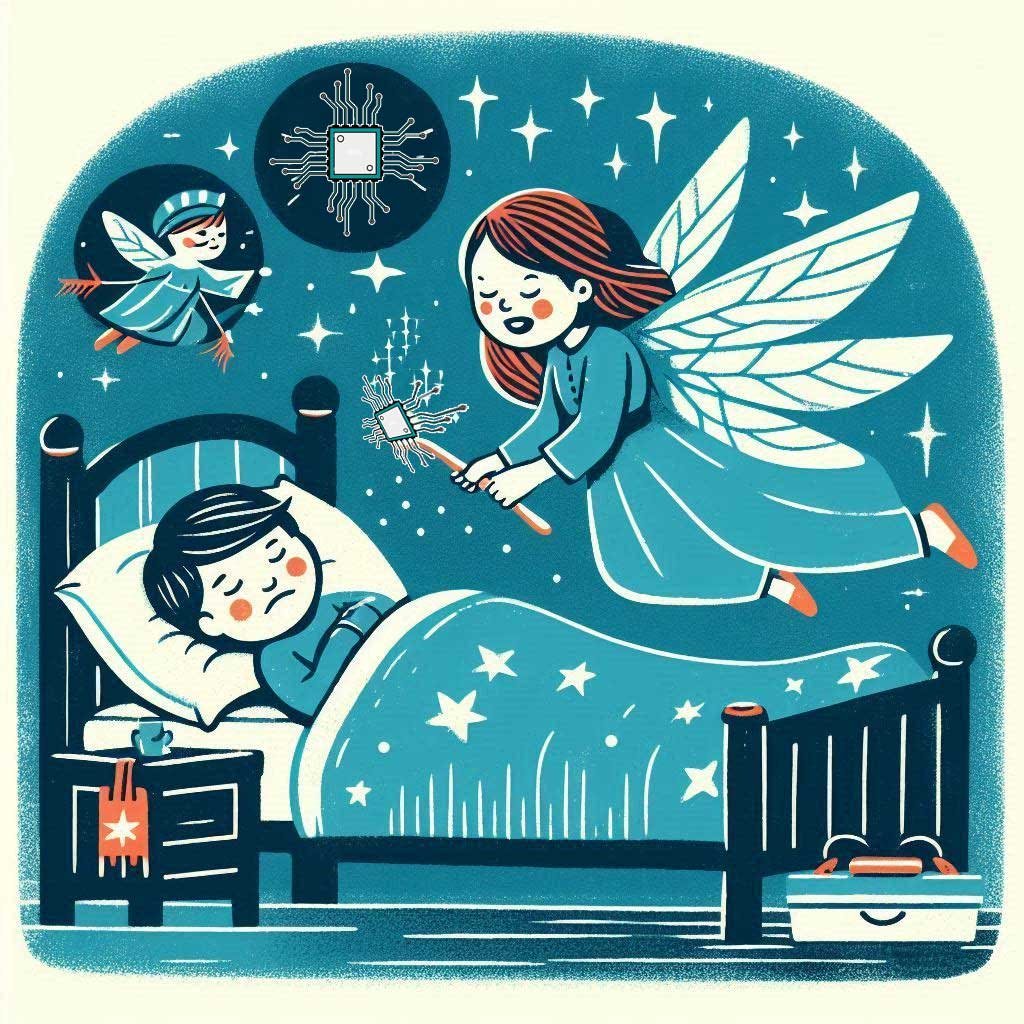
In a stunning development, Elon Musk has officially teamed up with the Tooth Fairy to facilitate the rollout of his controversial Neuralink technology. This unconventional partnership is set to transform the landscape of brain-computer interfaces, leveraging the Tooth Fairy’s unique logistical capabilities to install Neuralink chips while users sleep.
A Match Made in Innovation
Musk, the mastermind behind Tesla and SpaceX, has long been criticized for his ambitious and sometimes outlandish visions. However, this latest venture takes the biscuit. By collaborating with the Tooth Fairy—an entity already renowned for her nightly visits to collect lost teeth from under pillows—Musk aims to make the installation of Neuralink chips not just efficient but almost magical.
“Why not streamline the process?” Musk stated in a recent press conference. “If a fairy can collect a tooth from under a pillowcase, she can certainly embed a chip in your head. It’s all about optimizing the experience.”
The Technology of Tomorrow
The installation process is set to be as seamless as it is surreal. According to Musk, users will only need to place a small neurolink token under their pillow like you would a tooth, and while they sleep, the Tooth Fairy will replace it with a Neuralink chip. “Imagine waking up and finding not just a dollar, but a brain-computer interface that connects you directly to the digital world!” he exclaimed.
This ambitious plan raises eyebrows, but Musk envisions a future where the Tooth Fairy becomes a tech-savvy benefactor, ushering in a new era of cognitive enhancement. “With Neuralink, the Tooth Fairy can help unlock your brain’s full potential, allowing you to download knowledge, communicate telepathically, or even experience augmented reality dreams,” he added.
Ethical and Practical Concerns
While the concept may sound enticing, it is not without its ethical and practical concerns. Critics are quick to point out the implications of a mythical figure performing invasive procedures without consent. “The idea of the Tooth Fairy embedding chips while we sleep raises serious questions about agency and privacy,” warned Dr. Emily Turner, a bioethicist. “Are we prepared for a reality where our neural data is accessed without our explicit permission?”
Moreover, the reliability of the Tooth Fairy as a tech installer is questionable. What happens if the installation goes wrong? Will there be a customer service hotline for the Tooth Fairy? These absurd scenarios highlight the precarious balance between innovation and practicality.
The Dream Economy
Musk’s partnership could also create a bizarre new economy centered around dreams and aspirations. With Neuralink chips in place, users could experience an unprecedented level of interaction with their dreams, turning them into a form of currency. “What if you could wake up and instantly exchange your dream for a reward?” Musk posited. “The Tooth Fairy could analyze your dreams and grant you ‘dream credits’ that can be used for real-world benefits.”
This notion introduces a layer of complexity to the idea of personal value. What happens when dreams become commodified? Will individuals feel pressured to craft elaborate dreams to gain more rewards, leading to a competitive atmosphere that blurs the lines between fantasy and reality?
Public Reactions
The public response to this announcement has been a mix of intrigue and skepticism. Social media has erupted with reactions, ranging from enthusiastic support to outright disbelief. “This is the kind of innovation we didn’t know we needed!” one user tweeted, while another remarked, “Are we really trusting a fairy to install brain chips? This is getting out of hand.”
Despite the skepticism, Musk’s supporters argue that this partnership could pave the way for transformative advancements in technology and personal enhancement. “If anyone can make this happen, it’s Elon,” a fan declared.
Conclusion
As Musk’s partnership with the Tooth Fairy unfolds, it challenges our perceptions of technology, ethics, and personal agency. While the idea of embedding Neuralink chips during nightly visits may sound like a whimsical fantasy, it raises critical questions about the future of human interaction with technology.
Whether this bizarre collaboration will lead to groundbreaking advancements or simply spiral into absurdity remains to be seen. In the realm of Elon Musk, one thing is certain: the boundaries of imagination and innovation continue to blur, leaving us questioning what the future holds for humanity and our relationship with technology.
